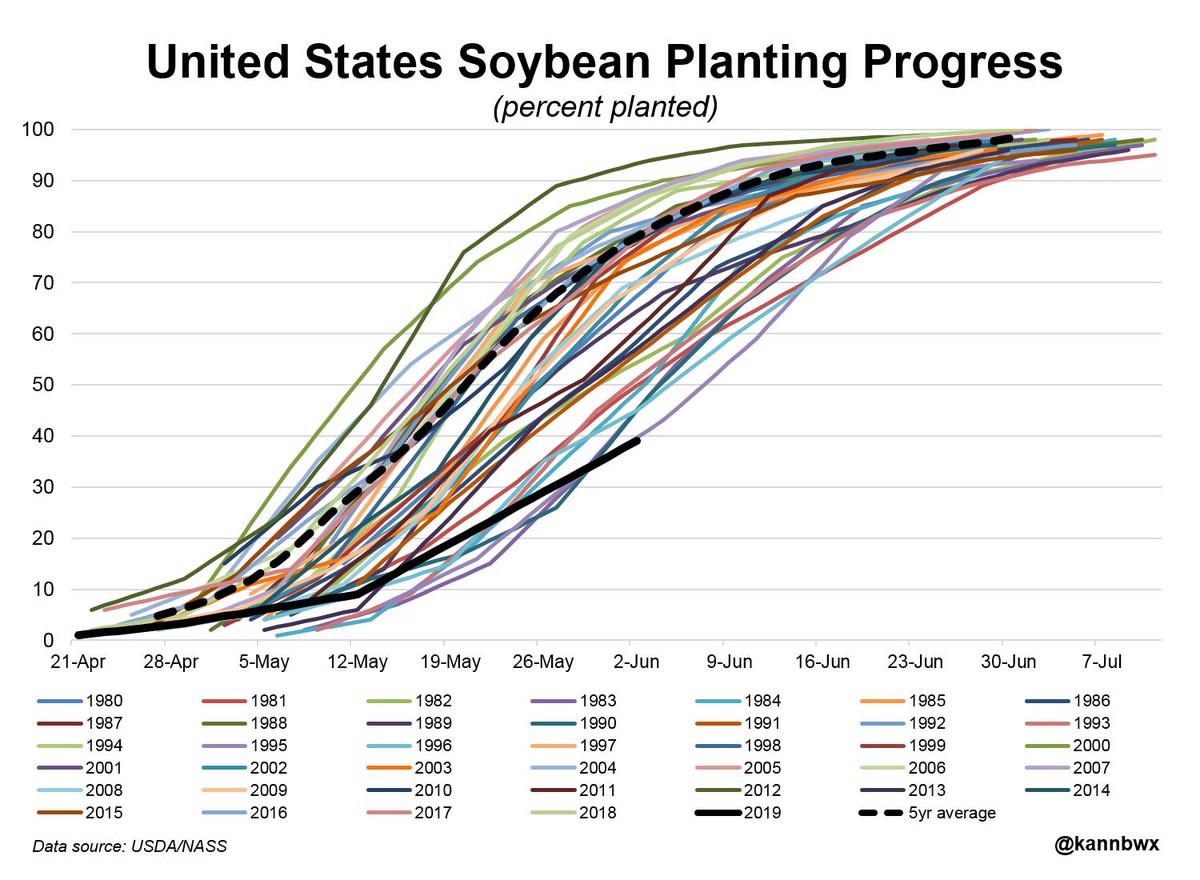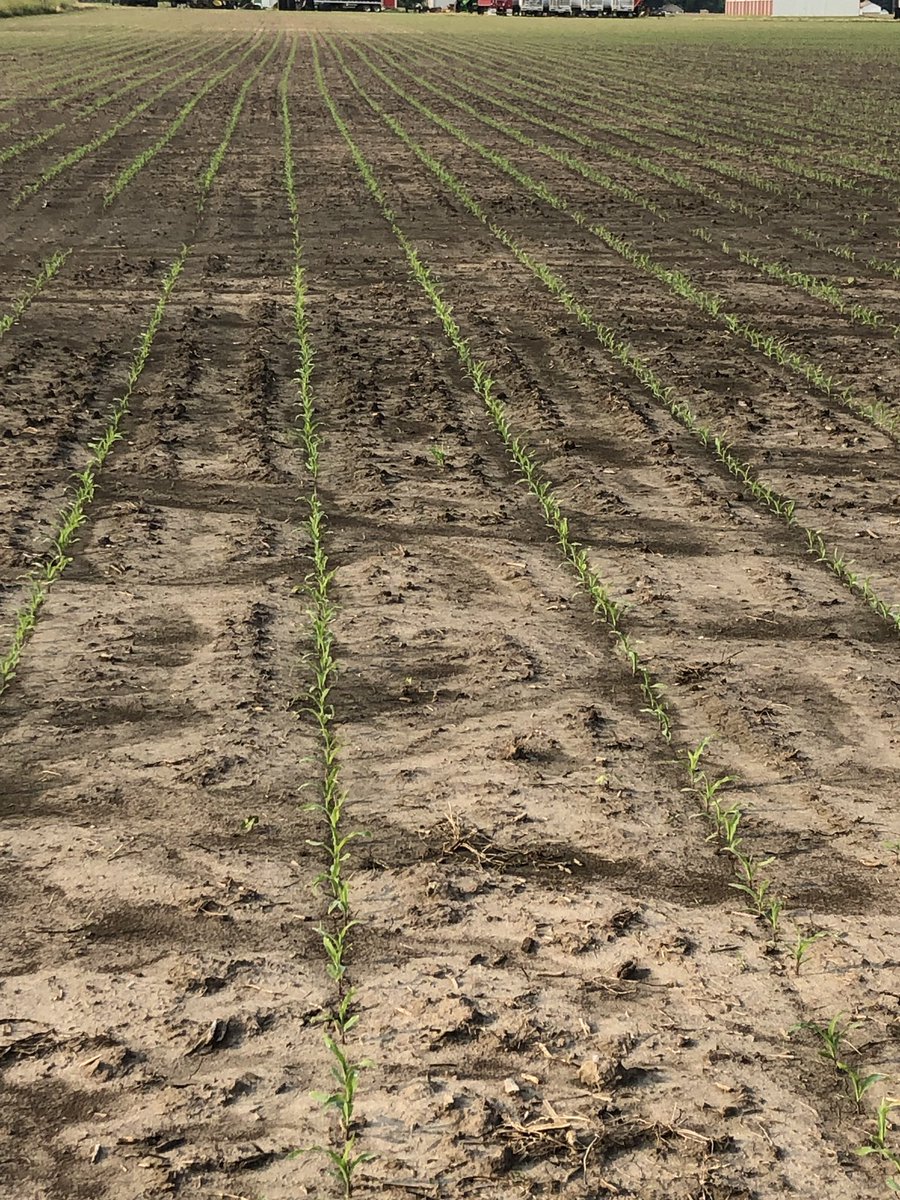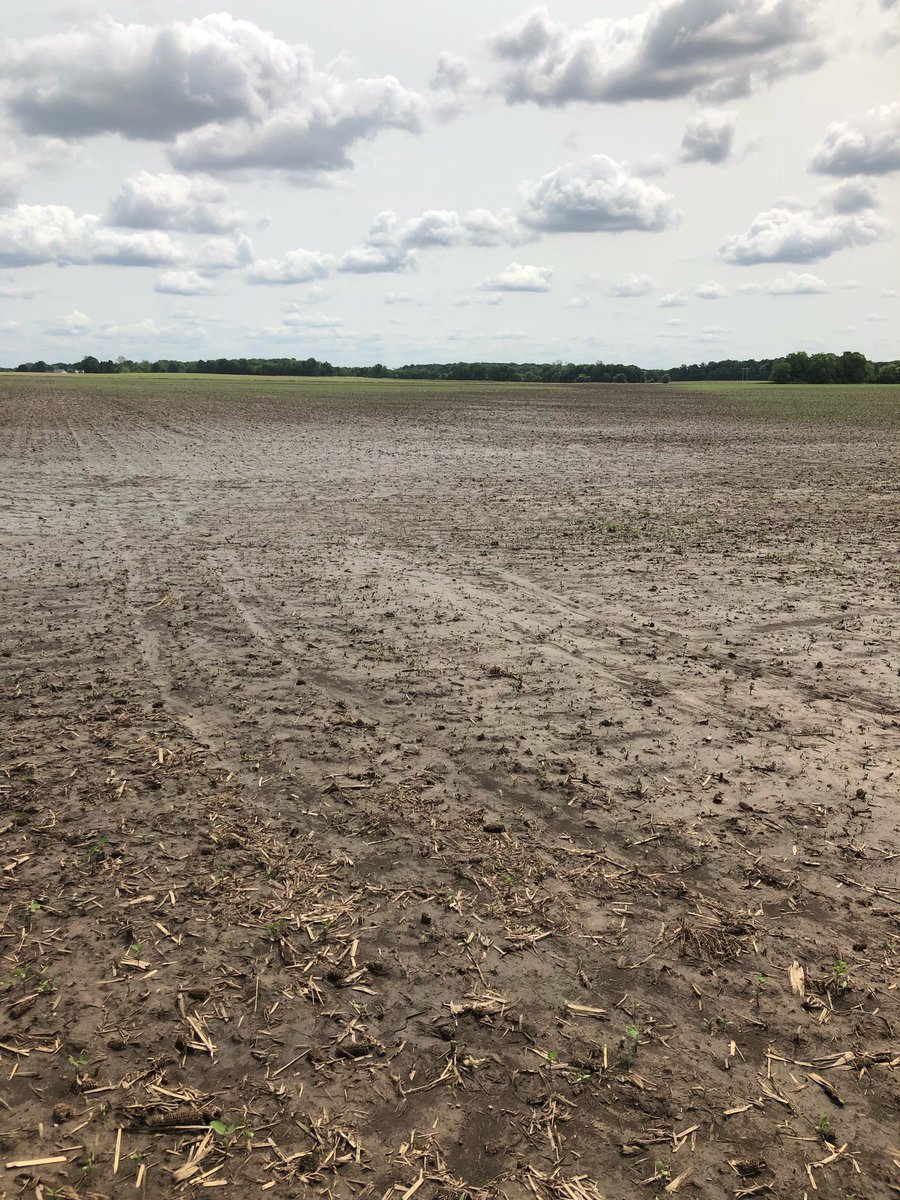
U.S. quarterly stocks won't be the main event Thursday, but supplies are tighter than usual so they can't be forgotten. Trade estimates would be:
#Corn: +2.4% YOY, -5.7% on 5yr avg
#Soybeans: +22% YOY, -8.5% on 5yr avg
#Wheat: -20% YOY, -30% on 5yr avg, 13yr low for date
#Corn: +2.4% YOY, -5.7% on 5yr avg
#Soybeans: +22% YOY, -8.5% on 5yr avg
#Wheat: -20% YOY, -30% on 5yr avg, 13yr low for date

Don't be fooled by +22% YOY for #soybeans when it comes to Sept. 1 possibilities. 2nd half use in 20/21 was a 6yr low and 18% below the 5yr avg. Exports were extremely light for the period after the big effort in H1, and the remaining 21/22 book is much bigger than usual.
When I say quarterly stocks aren't the main event, what I mean is that U.S. corn and soy acreage in particular will be the two numbers the market wants to see first on Thursday. But never dismiss stocks.... they can stir up chaos anytime, anywhere.
To follow up on this, if 1.902 bbu is the true March 1 supply of #soybeans, and if 2nd half 21/22 U.S. soy use matches 2019's record, that puts ending stocks at 84 mbu.
Striking out poll low outlier, trade avg is 1.914 bbu, putting Sep 1 at 96 mbu with use = record.
Striking out poll low outlier, trade avg is 1.914 bbu, putting Sep 1 at 96 mbu with use = record.
Maybe use won't be record, but should be pretty high. So in order to avoid very thin 21/22 soy ending stocks, we either need to find more soybeans (was the crop bigger?), some exports likely would need to be rolled/cancelled/no more sales, crushers need to ease up a little.
USDA c/o estimate is 285 mbu. If March 1 is 1.902 bbu, that implies H2 use 1.6% above the recent 5yr avg, but 11% below record and below the same periods in 2018, 2019, 2020.
Does that usage target sound reasonable? Why or why not?
Does that usage target sound reasonable? Why or why not?
• • •
Missing some Tweet in this thread? You can try to
force a refresh


















